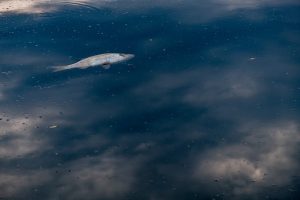MIT Sea Grant Beach Contamination Outreach
 MIT Sea Grant worked with Massachusetts towns to increase outreach, awareness, and reduction of beach contamination.
MIT Sea Grant worked with Massachusetts towns to increase outreach, awareness, and reduction of beach contamination.
Bacterial contamination from two Massachusetts towns, Lynn and Swampscott, discharges from a single outfall onto King’s Beach, which is a popular recreational area with 9- to 12-foot tides over a sandy area that has a constant flow of contaminated waters (bacterial levels are 1000 to 2000 times the standard for swimming).
The State of Massachusetts funded a study through Save the Harbor to examine the contamination that contributes to exceedingly high bacterial levels to the beaches. MIT Sea Grant College Program chairs a Technical Advisory Committee that reviewed the report and data, recommended signage and outreach to inform beach goers, and recommended further study to determine if additional sources currently unidentified are contributing to contamination at this site.
Both towns contribute flow through the outfall pipe that contains high bacterial levels, despite earlier attempts to stem the sources of contamination. New signage posting warnings of contamination has been placed on the sea wall (it is not possible to place signs in the sandy beach because of the tides) along with flagging the beach to indicate contamination levels. Both towns are committed to determining if additional sources missed in earlier investigations exist, such as illegal hook-ups to storm sewers, leaking sewage pipes, runoff and other potential sources. Both towns are pursuing additional funding to address reduction and elimination of the sources.



